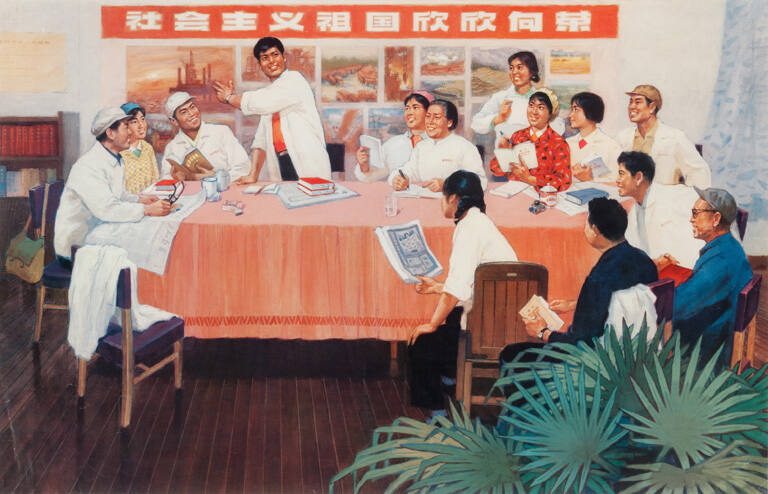
Object Details
Artist
Xu Wenhua
Medium
Poster
Dimensions
Window mat: 18 1/4 × 28 1/2 inches (46.4 × 72.4 cm)
Frame: 25 1/2 × 35 1/2 inches (64.8 × 90.2 cm)
Credit Line
Gift of Andrew Byong-Soo Kim, MBA 1963, and Wan Kyun Rha Kim
Object
Number
2004.038.003
The end of the Cultural Revolution came in 1976 with Mao’s death and the subsequent arrest of the (…)
The end of the Cultural Revolution came in 1976 with Mao’s death and the subsequent arrest of the Gang of Four. Afterward, the Chinese Communist Party underwent a period of reform and ended the country’s isolation. Many artists and intellectuals were rehabilitated, and propaganda posters openly criticized the Gang of Four. By 1979 the CCP had adopted a new approach to economic development through its Four Modernizations: in agriculture, industry, national defense, and science/technology. Under the leadership of Deng Xiaoping, visual propaganda promoted the building of China into a modern Socialist country whose economic reforms would make it “rich and strong” (fuqiang). Xu Wenhua, also the painter of Mao’s Children (2004.038.001, designed many political posters during the Four Modernizations period. From 1979–1985 he taught art at the Shanghai Light Industrial Design Institute. In 1986 he moved to New York.












